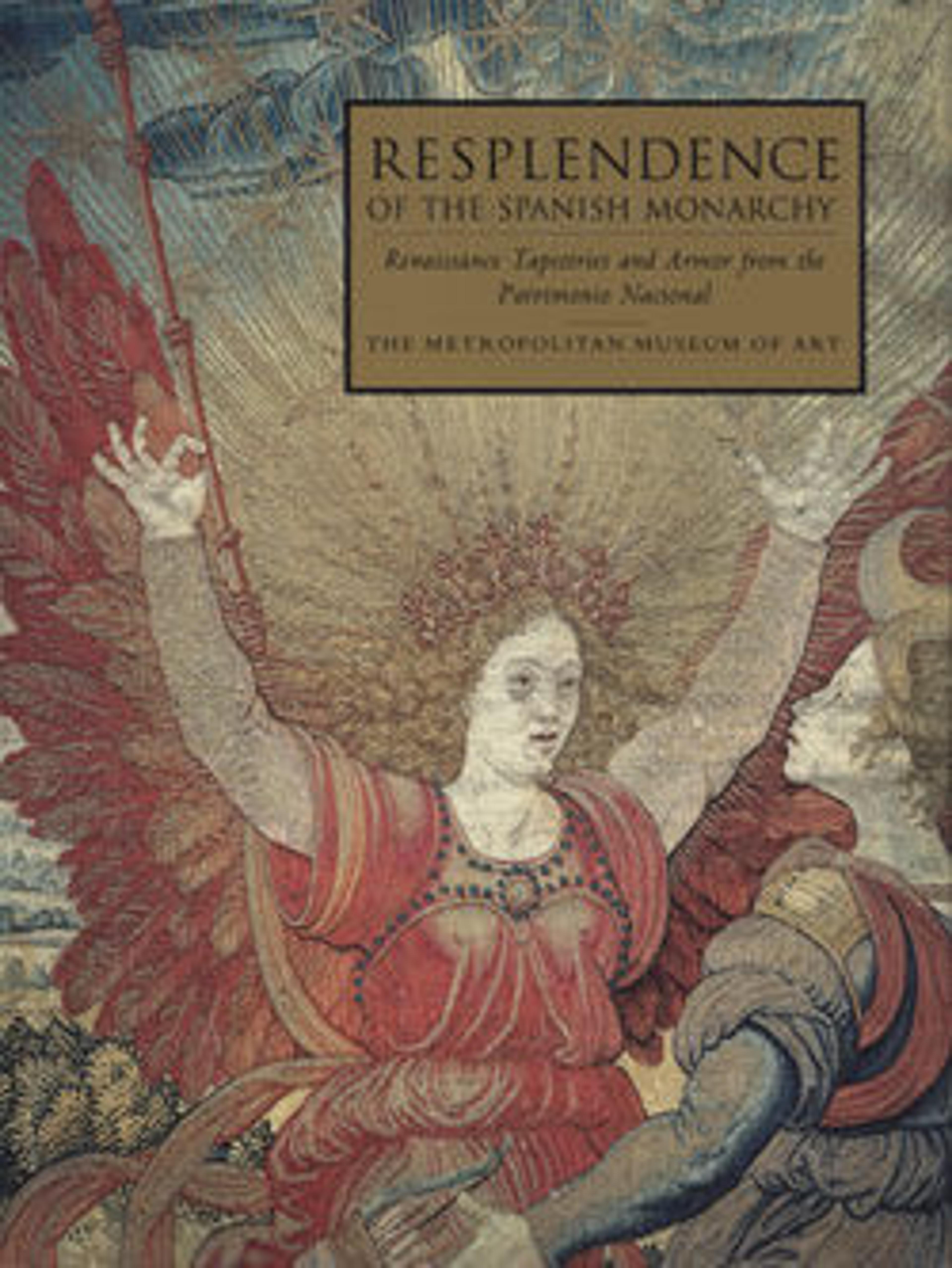
Resplendence of the Spanish Monarchy: Renaissance Tapestries and Armor from the Patrimonio Nacional
With the conquest of Granada in 1492, Ferdinand of Aragón and Isabelle of Castile became the first rulers of all Spain. The discovery of the New World in the same year put them in command of vast, previously untapped resources. When their Hapsburg grandson came to the throne in 1516 as Charles I of Spain—later to govern the Holy Roman Empire as Charles V—Spanish sovereignty expanded still further, for Charles brought with his as his paternal inheritance the duchy of Burgundy, including the Netherlands where he was born. A formidable power in Europe, endowed with a flourishing empire overseas, Spain in the sixteenth century was thus ideally placed to enjoy a Golden Age.
Both Charles I and his son Philip II were monarchs of their time, acting as generous patrons of the arts. They were in a position to call on the best that Europe could supply, and with possessions in Italy as well as Flanders, they had ready access to the two mainsprings of the Renaissance. The collections they formed offer a uniquely privileged view of Renaissance taste and artistry.
Although very different in medium, tapestries and armor exemplify the royal collections, designed not only for personal delectation but also as impressive displays of regal magnificence. Wool and steel were enhanced with precious metals, adding a luster that still dazzles the eye. Images harnessed from myth, religion, allegory, history past and present went into the creation of a world of art that is now timeless and accessible to all.
Today the Patrimonio Nacional is the guardian of this priceless heritage. Visitors to Spain can admire the tapestries hung in the Royal Palace in Madrid, as well as in other reales sitios throughout the country, and the arms and armor housed in the Royal armory of Madrid. Here, presented in English for the first time, is a selection of these treasures: tapestries that eloquently reflect the range of the collection, and pieces of armor outstanding both for their associations and for their aesthetic interest. New color photography was undertaken in order to do justice to the originals. In a masterly introductory essay, Antonio Domínguez Ortiz, member of the Spanish Royal Academy of History, surveys the historical context. The tapestries are described and discussed by Concha Herrero Carretero, curator of tapestries at the Patrimonio Nacional, and the armor by José A. Godoy, curator of arms and armor at the Musée d'Art et d'Histoire, Geneva. The result is a richly informative and visually splendid work that speaks to expert and art lover alike.
Met Art in Publication
Citation
Domínguez Ortiz, Antonio, Concha Herrero Carretero, and José A. Godoy. 1991. Resplendence of the Spanish Monarchy: Renaissance Tapestries and Armor from Patrimonio Nacional [Exhibition Held at The Metropolitan Museum of Art, New-York, October 11, 1991 to January 5, 1992]. New-York: Metropolitan museum of art.